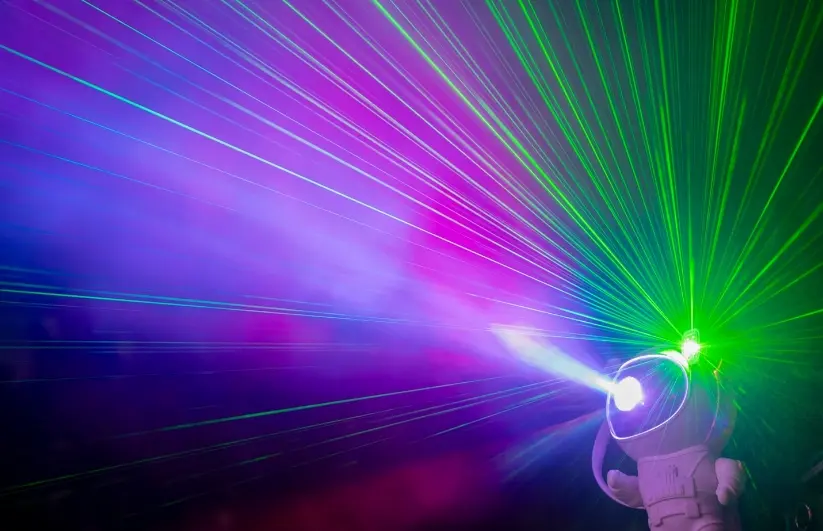
How to Get an EN 60825-1 Test Report?
The fULl title of the EN 60825-1 standard is "Safety of Laser Products - Part 1: Equipment Classification and Requirements." Its primary goal is to protect human health by preventing injuries caused by laser radiation. It achieves this through classification of laser products and specific safety requirements aimed at mitigating hazards such as retinal burns, eye damage, skin burns, fire risks, photocheMICal reactions, toxic dust, and electric shock.

Laser Product Classification
According to the EN 60825-1 standard, laser products are classified into seven main categories, each reflecting the potential hazards lasers pose to the human body:
- Class 1: These laser products are consideRED the safest, posing no danger to eyes or skin under normal usage conditions.
- Class 1M: May pose hazards when viewed with magnifying devices like binoculars or telescopes.
- Class 2: Low-power visible lasers (400-700 nm) are safe for short exposure (less than 0.25 seconds) due to the blink reflex mechanism.
- Class 2M: Similar to Class 2 but may be hazardous when optical instruments are used.
- Class 3R: Pose some risk to the eyes but are safe under controlled conditions; output power is no more than 5 mW.
- Class 3B: Hazardous to both eyes and skin; direct or reflected beams can cause harm. Output power ranges between 5 mW and 500 mW.
- Class 4: Highly dangerous to eyes and skin; even scattered light can cause harm. Output power exceeds 500 mW.
Product Structural Requirements
1. Protective Housing
The product must have a housing (except for designated openings) to prevent internal laser emissions from leaking. The housing must also maintain sufficient mechanical strength.
2. Access Panels and Safety Interlocks
- Access panels are parts of the protective housing, such as covers or doors. Removal or displacement can expose the operator to laser radiation.
- Safety interlocks must be installed on access panels to prevent exposure to internal lasers during operation or maintenance.
3. Remote Interlock Connector
Controls the laser beam to ensure that, when the connector's terminal is open, the emitted laser beam does not exceed Class 1M or Class 2M levels.
4. Manual Reset
A function that ensures laser emission is controlled manually after being interrupted by the remote interlock connector. Even if the connector is short-circuited again, the laser product will remain off and will not restart automatically without specific manual intervention.
5. Key Control
A function ensuring that the laser only emits when the key is in the "ON" position. The key can only be removed when in the "OFF" position, ensuring safe operation.
6. Laser Radiation Emission Warning
Warns operators visually or audibly when the laser product is emitting or capable of emitting radiation. Visual warnings must remain recognizable even when viewed through protective eyewear.
7. Beam Terminator or Attenuator
- Beam Terminator: Terminates the emitted laser beam.
- Beam Attenuator: Reduces laser output to below specified levels.
8. Control Unit
Ensures that operators can control the laser product without direct exposure to laser radiation.
9. Scanning Safety Measures
Prevents laser emissions from exceeding the maximum allowable exposure level (AEL) for a given class. For example, if a laser scanning system malfunctions, it should stop scanning automatically.
10. Warning Labels/Description Labels/Aperture Labels
- Warning Labels: Indicate laser hazards using symbols.
- Descriptive Labels: Clearly specify warnings, laser specifications, and the laser class.
- Aperture Labels: Clearly mark the protective housing’s openings where lasers are emitted.
Laser Product Certification Process
1. Complete the Application Form
Submit a completed application to initiate the testing process.
2. Send Samples to JJR Laboratory in China
Deliver product samples to the testing laboratory for evaluation.
3. Sign Contract and Make Payment
Confirm the contract terms and complete payment.
4. Conduct Formal Testing
The laboratory performs tests according to EN 60825-1 standards.
5. Confirm the Test Report
Review the draft test report for accuracy.
6. Issue the Official Test Report
Receive the final test report upon successful completion of testing.
This structured guide ensures compliance with EN 60825-1 requirements, helping to guarantee the safety of laser products while meeting international standards.
Email:hello@jjrlab.com
Write your message here and send it to us
 What Are the Testing Items of California Propositi
What Are the Testing Items of California Propositi
 E-Cigarette EU TPD Testing
E-Cigarette EU TPD Testing
 Testing Certification for E-cigarettes Exported to
Testing Certification for E-cigarettes Exported to
 What is Amazon US CPC Certification?
What is Amazon US CPC Certification?
 UK Toy Safety Regulation Standard EN 71-13
UK Toy Safety Regulation Standard EN 71-13
 What is EU UFI Registration?
What is EU UFI Registration?
 EU UFI Registration for E-cigarette E-liquid
EU UFI Registration for E-cigarette E-liquid
 How to get the MSDS Report for Electronic Cigarett
How to get the MSDS Report for Electronic Cigarett
Leave us a message
24-hour online customer service at any time to respond, so that you worry!




